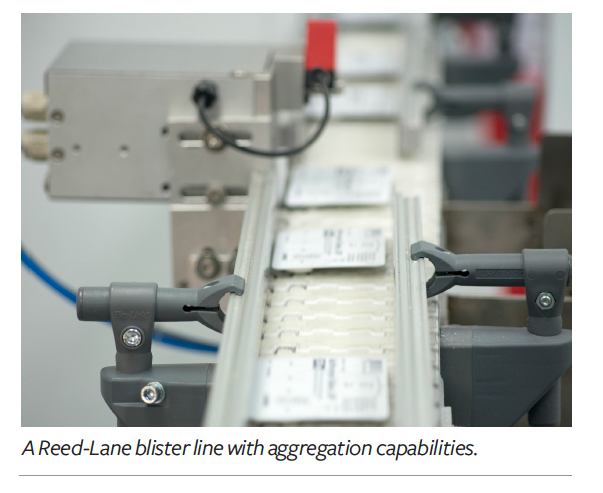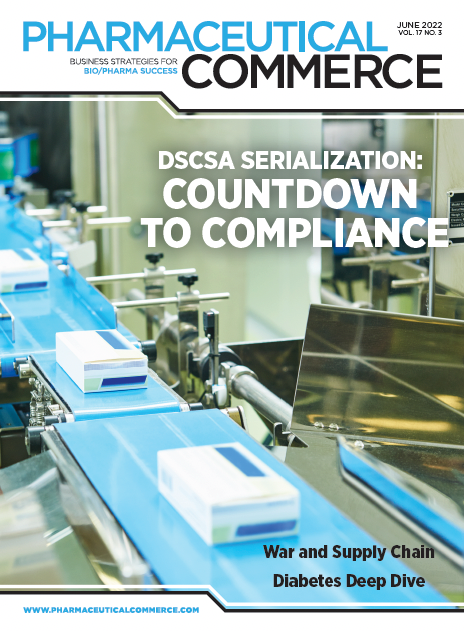Navigating Uneven Terrain in Labeling
The crucial link of labeling and packaging in the pharma supply chain has its glory, but is not without its set of obstacles amid current market and global challenges
According to Imarc Group,1 a company providing market and business research intelligence, the global pharma labeling market reached $4.7 billion in 2020. Between 2021 and 2026, the firm expects this segment to grow at a compound annual growth rate (CAGR) of around 9%.
However, various factors, such as the ongoing impact of COVID-19 and, now, the fallout of the Russia–Ukraine war, are continuing to directly and indirectly influence the labeling and packaging areas of the pharma supply chain, with pricing and availability practically fluctuating overnight. Although it may a bit too early to feel the war’s impact on the labeling market, we know that such disruptions can affect all areas of the supply chain. A recent report authored by United States Pharmacopeia’s Vimala Raghavendran,2 for example, highlights how drug shortages “can stem from global health crises, natural disasters, geopolitical events, or quality-related issues in manufacturing.”
Labeling vulnerabilities

Certainly, since early 2020, COVID has presented the supply chain with one of its greatest challenges because of the delays that it has caused, not least in the supply of materials. “COVID has caused havoc in the manufacturing of solid dose bulk product, as there is a shortage of supply in the marketplace,” says Josh Goolcharan, strategic account manager for Reed-Lane, a pharma contract packager that also offers labeling services. “There are also shortages in paper and cardboard raw materials, prompting suppliers to place all manufactures on allocation and making it difficult to procure components. In general, we are seeing longer than normal lead times for all materials, including bottles, caps, foil, and film.”
Falsified medicines have also been an ongoing concern within the pharma space, becoming even more prominent as the use of digital technology has continued to develop. “Counterfeit drugs have been a growing threat for the pharmaceutical industry for many years, and even more prevalent with regard to COVID-19. Changed consumer behavior with increased use of the internet and social media plays an important role, too,” says Gene Dul, president of Schreiner MediPharm US, a specialty label developer and manufacturer. “There is also an increasing risk of gray market activities and illegal reuse of original containers. Consequently, pharma companies have to consider how they can secure their products and their integrity by tamper-evident packaging and labeling solutions, as well as integrated authenticity features for product authentication.”
Track-and-trace technology
Remedying these respective issues begins with a fundamental principle: establishing an open line of communication with clients. “As Reed-Lane cannot control raw material availability, we are in constant communication with both our customers and vendors to get the most up-to-date information possible,” says Goolcharan. “The customer service team has been working with our customers to review forecasts and extended lead times when placing vendor orders. The purchasing team has been in daily contact with our vendors to understand the challenges that they are facing and to get real-time updates regarding changes or potential improvements in the supply flow.”

When it comes to security, combating challenges requires a proactive, diligent approach, employing track-and-trace solutions with radio-frequency identification (RFID) technology. “To support supply chain integrity and combat counterfeiting,” says Dul, “Schreiner MediPharm develops customized security labeling solutions that address diverse threat scenarios. These include tamper-evident labels and security concepts for irreversible first-opening indication of folding boxes and primary containers. Thus, the manipulation of outer packaging can be made obvious, the illegal re-use of empty primary containers prevented, and the product integrity supported.
“When it comes to counterfeit protection,” he adds, “label-integrated authentication features ranging from overt, semi-covert, and covert, to digital technologies, can provide effective authenticity checks within the supply chain. In addition, intelligent track-and-trace solutions and label-integrated RFID chips enable unique drug identification.”
Schreiner’s technology features a smart wallet, which serves as a way to keep track of medication adherence; these digital tools enable pharmaceutical manufacturers to track compliance of their trial participants automatically, says Dul. “A smart blister wallet, for instance,” he explains, “is supplied with integrated conductive tracks and a printed circuit board to the pharma manufacturer or [contract manufacturing organization] CMO, who fills it with the respective tablet blister. When the patient pushes a tablet out of the blister pack, data such as the type of medication, time/date of removal, dose, and the relevant cavity are generated and automatically stored in the smart wallet.”
According to Dul, data transmission occurs via NFC or Bluetooth, either at the trial clinic or by the patient using a smartphone app. “Thus, the patient’s compliance can be tracked,” he says. “Specialty control software enables monitoring and analysis of the obtained data. Pharma companies benefit from advantages in clinical research, such as more reliable data quality, lower failure rates due to non-adherence, more efficient processes due to reduction of manual work, and faster time-to-market.”
Similarly, Reed-Lane offers blistering services—its blister lines are capable of running thermoform (PVC, PVDC, Aclar) and cold form (Alu-Alu) blisters. As far as serialization, just as labels can undergo this process, so do cartons. The company’s branded “Carton Serialization Suite” featuring the Optel TrackSafe system—its website notes—can help with serialization, starting at the unit level through full-pallet aggregation. In late 2020, the company introduced a second track and trace-ready cartoning line specifically for the unit level and multi-level aggregation.
Looking ahead
Imagining the pharma labeling industry in the next three-to-five years, Dul envisions the further development of current approaches not only to efficiently track and trace products, but also to assist the patient. “Trends like supply chain integrity, digitization, and sustainability will continue to play an important role in labeling,” he says. “Labeling suppliers have to provide innovative customized solutions that are optimally adapted to the specific application and packaging, while addressing market trends and the special challenges they pose. Expertise in label technologies, combined with deep market knowledge, is the basis for novel and reliable solutions that benefit the product and the patient.”
References
1. https://www.imarcgroup.com/pharmaceutical-labeling-market
2. USP, The Medicines Supply Chain: Increasing Visibility to Strengthen Preparedness, https://qualitymatters.usp.org/increasing-visibility-in-the-medicines-supply-chain

Strategic Trends in Pharmaceutical Manufacturing for Industry Leaders
March 10th 2025This link in the pharma supply chain is undergoing a major transformation propelled by technological advancements, regulatory changes, and evolving market dynamics, requiring industry leaders to adopt innovative strategies in order to remain competitive.
Strategic Trends in Pharmaceutical Manufacturing for Industry Leaders
March 10th 2025This link in the pharma supply chain is undergoing a major transformation propelled by technological advancements, regulatory changes, and evolving market dynamics, requiring industry leaders to adopt innovative strategies in order to remain competitive.
485 Route 1 South,
Building F, Suite 210
Iselin, NJ 08830
All rights reserved.